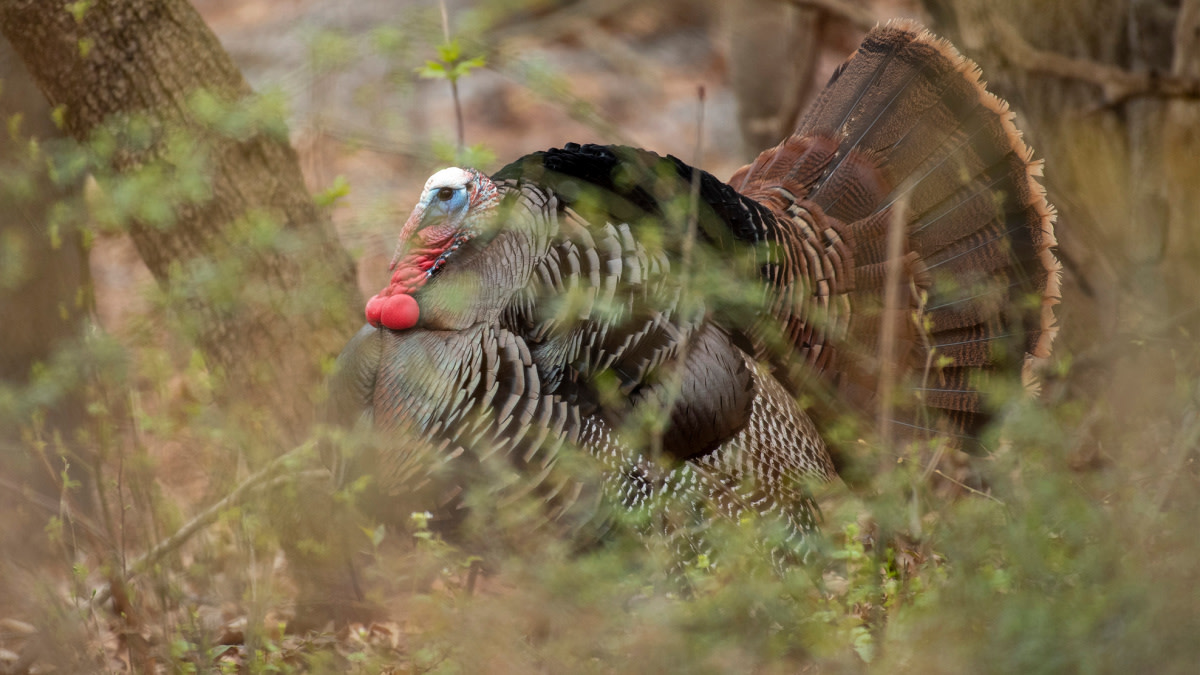
Some animals are just plain tough, others not so much. In the latter category, you could probably put cottontails, ruffed grouse, and pronghorn. While there are exceptions to every rule, those species seem to give up the ghost without too much persuasion.
Other animals like whitetails, elk, several squirrel species, and turkeys aren’t so quick to shed the old mortal coil. When it comes to turkeys, this stems from sheer willpower and a small-vital-area design that allows them to shrug off hits that appear deadly. This is something newcomers will figure out eventually and is always on the mind of seasoned turkey hunters regardless of their weapon of choice.
The Big No-No Mitch Boyum is not only an incredible turkey caller and hunter, he’s also a conservation officer for the Minnesota Department of Natural Resources. When asked what turkey shot he’d recommend all hunters pass on, he didn’t hesitate with his initial response.
“With gun hunters, it’s the multiple-bird situation,” Boyum said. “When you look at how effective modern turkey loads are, you realize how easy it can be to kill an extra bird during the heat of the moment.”
This scenario is something that Boyum receives a few calls on each spring and it’s almost always avoidable. The key is not to get so laser-focused on the target bird that every other nearby bird becomes an afterthought. It’s also important to recognize how far a turkey load can carry. More than a few hunters have shot what they thought was a lone tom in their spread, only to realize an innocent bystander was also in the line of fire.
Stop Moving! Another shot situation that often results in a miss or a wounding occurs when the bird is moving. This is tricky, Boyum noted, because turkeys are almost always moving.
“Turkeys have kind of awkward, jerky movements where their head is always catching up to their body. If you’re not used to watching how real birds move, it’s easy to take aim at the head only to pull the trigger as it moves out of your sight window. With kids and new hunters, this happens a lot.”
You can’t exactly mrrrp a turkey the way you would a deer, although you can call to them to get them to stop and pick their head up. In fact, last year I gobbled at a bird twice so my daughter could shoot him when he stopped. It worked, but I was also confident that it would and that she’d be patient enough to wait for the shot.
Turkeys move a lot. The best way to not shoot at the wrong moment is to watch live birds as much as you can and allow the encounter to play out naturally. A cautious bird creeping in might not present a great target, but a longbeard that commits to the spread will eventually stop long enough for you to line up the red dot or settle your pin on his chest.
So Far Away A strutting tom can do weird things to us, like making us think he’s 20 yards closer than he is. This happens with birds in fields a lot and it’s a great way to mess up a shot with a bow or a gun. If you’re not great at judging distance, carrying a rangefinder. Ranging objects in front of your spread before you ever call is a good strategy.
Plenty of hunters don’t consider this with shotguns, but they should. Even though some hunters are now taking turkeys at previously unheard-of ranges, those birds are dying because of specialized chokes and high-end tungsten turkey loads (and hopefully, plenty of range time to figure out the gun and load capabilities). For the average hunter heading out with a trusty shotgun, understanding their maximum effective range is important.
When it comes to bowhunting this is also critical. A turkey’s vitals are small, covered in feathers, and often not easy to hit even when a longbeard is 10 yards away. At 30, 40, or 50 yards, the whole thing becomes a recipe for a whiff or a not-immediately-lethal breast or leg hit.
Too far is just too far. Pushing shot distance with a gun or a bow rarely works out well. A better bet is to set a hard limit and then figure out how to get a bird inside that range. You'll have a hard time finding a really successful turkey hunter who takes long pokes. They've probably seen how badly it can go wrong.
Feature image via Matt Hansen.





